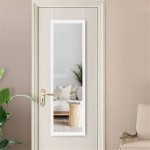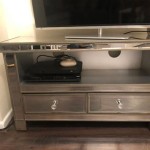Antique Tiled Floor Mirrors: A Reflection of History and Style
Antique tiled floor mirrors represent a unique intersection of functionality and artistry. These impressive pieces, often dating back to the late 19th and early 20th centuries, served a practical purpose while simultaneously adding a touch of elegance and grandeur to interiors. Their substantial size and intricate tilework make them highly sought-after items for collectors and interior design enthusiasts alike.
Construction and Design
The construction of antique tiled floor mirrors involved a meticulous process. A sturdy wooden frame, typically made of oak or mahogany, formed the foundation. This frame was then carefully fitted with individual tiles, creating a decorative border surrounding the central mirrored glass. The tiles themselves varied widely in material, color, and design, contributing to the unique character of each mirror.
Tile Materials and Motifs
A range of materials was employed in the creation of these tiled masterpieces. Ceramic tiles were a common choice, offering durability and a wide array of decorative possibilities. The glazes used on ceramic tiles allowed for vibrant colors and intricate patterns. Some mirrors featured more luxurious materials like porcelain or even hand-painted majolica tiles, elevating their aesthetic value. Common motifs included floral designs, geometric patterns, and classical imagery, reflecting the popular styles of the period.
The Role of the Cheval Glass
Many antique tiled floor mirrors took the form of a cheval glass, a full-length mirror mounted on a frame with pivoting supports. This design allowed the user to adjust the angle of the mirror, providing a convenient way to view oneself from head to toe. The cheval glass design also contributed to the overall grandeur of the piece, adding a sense of formality and elegance to the space it occupied.
Mirrors as Status Symbols
In the late 19th and early 20th centuries, large floor mirrors, particularly those with elaborate tilework, were often considered status symbols. Their presence in a home signified a certain level of affluence and taste. The craftsmanship and materials involved in their creation contributed to their perceived value, making them prized possessions.
Placement and Purpose
These large mirrors served both practical and decorative purposes. Placed in bedrooms or dressing rooms, they provided a full-length view for dressing and grooming. In hallways or entryways, they created an illusion of spaciousness and added a touch of grandeur to the home. The reflective surface also helped to amplify natural light, brightening the surrounding area.
Identifying Antique Tiled Floor Mirrors
Identifying a genuine antique tiled floor mirror requires careful examination. Look for signs of age and wear, such as patina on the frame, crazing in the tile glaze, or minor imperfections in the mirror itself. Examine the tilework closely, noting the materials used, the intricacy of the design, and the presence of any maker's marks. Researching similar pieces and consulting with antique experts can help authenticate a potential find.
Restoration and Care
Antique tiled floor mirrors often require specialized care and restoration. Cleaning should be done gently with appropriate materials to avoid damaging the delicate tilework or the mirrored surface. Damaged tiles may need to be repaired or replaced by a skilled conservator. Proper storage and handling are essential to preserving these fragile pieces for future generations.
The Enduring Appeal
The enduring appeal of antique tiled floor mirrors lies in their unique blend of functionality, artistry, and historical significance. These pieces offer a glimpse into the past, reflecting the tastes and craftsmanship of a bygone era. Their substantial size, intricate tilework, and reflective surfaces continue to captivate, making them cherished additions to both traditional and contemporary interiors.
Variations in Style
While many antique tiled floor mirrors share common characteristics, significant variations in style existed. The Aesthetic Movement, popular in the late 19th century, influenced some designs with its emphasis on artistic beauty and handcrafted details. Art Nouveau mirrors often featured sinuous lines and stylized floral motifs. Arts and Crafts mirrors, on the other hand, emphasized simplicity and functionality, often incorporating geometric tile patterns.
The Influence of the Arts & Crafts Movement
The Arts & Crafts movement, with its focus on handcrafted quality and simple, functional design, significantly influenced the production of tiled floor mirrors. Mirrors produced during this period often featured hand-glazed tiles with geometric or nature-inspired patterns, and the frames were typically constructed from high-quality wood, emphasizing natural materials and craftsmanship.

Antique Tiled Floor Mirror West Elm Interior Design Tiles

West Elm Antique Tiles Floor Mirror Contemporary Den Library Office Heather Garrett Design

Antique Tiled Floor Mirror West Elm

Antique Tiled Floor Mirror West Elm Havenly

Vintage Mirror Tiles Antique Glass Large Panels Multiple Sizes Available M

Buy Antique Tiled Rectangle Wall Mirror 61cm W X 91cm H Now West Elm Ksa

Narciso Antique Mirror Effect Tile Devon Tiles Bathrooms

West Elm Antique Tile Floor Mirror Chairish

Grace Arched Full Length Wall Mirror Shine Mirrors

West Elm Antique Tile Floor Mirror Chairish








